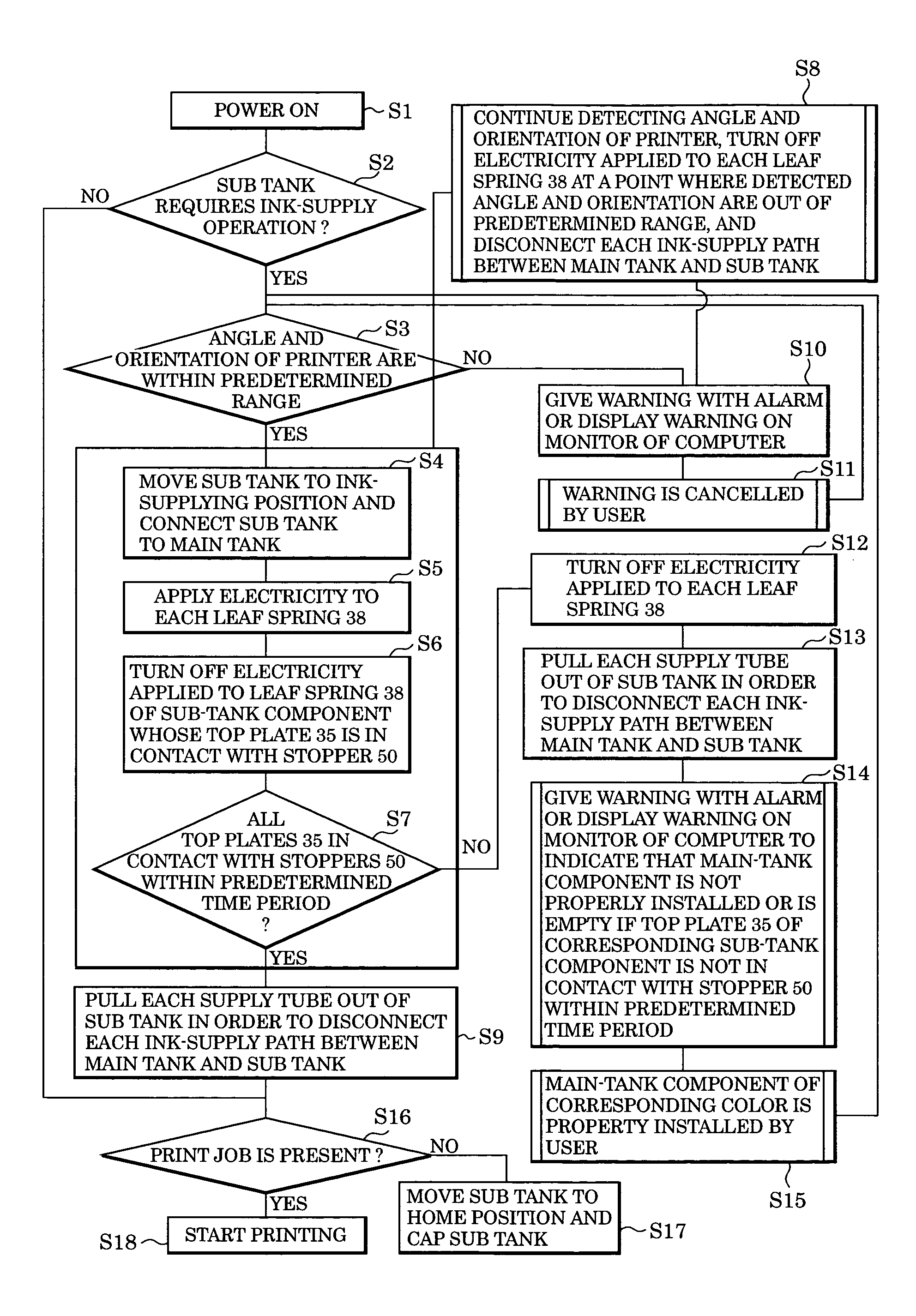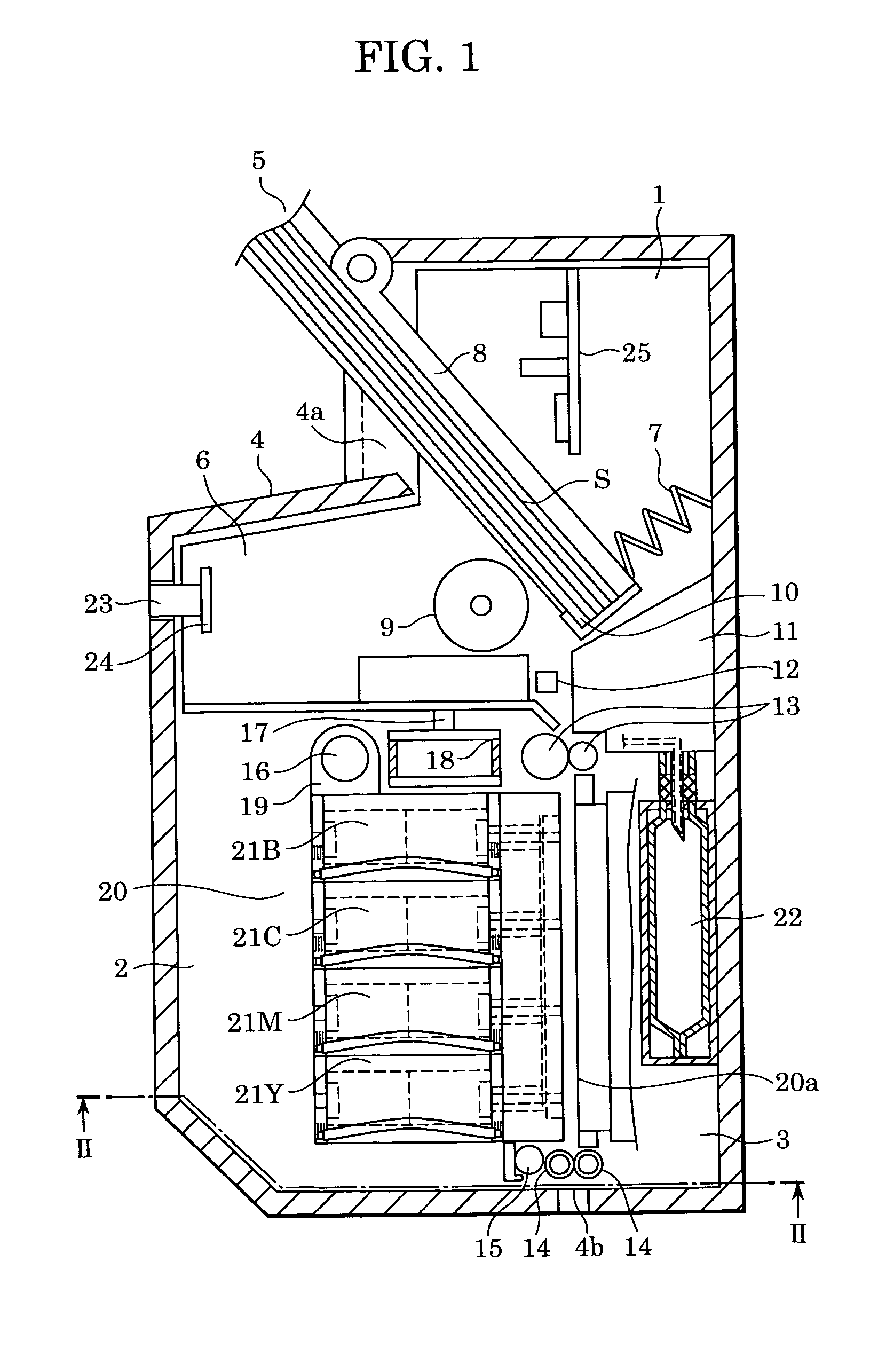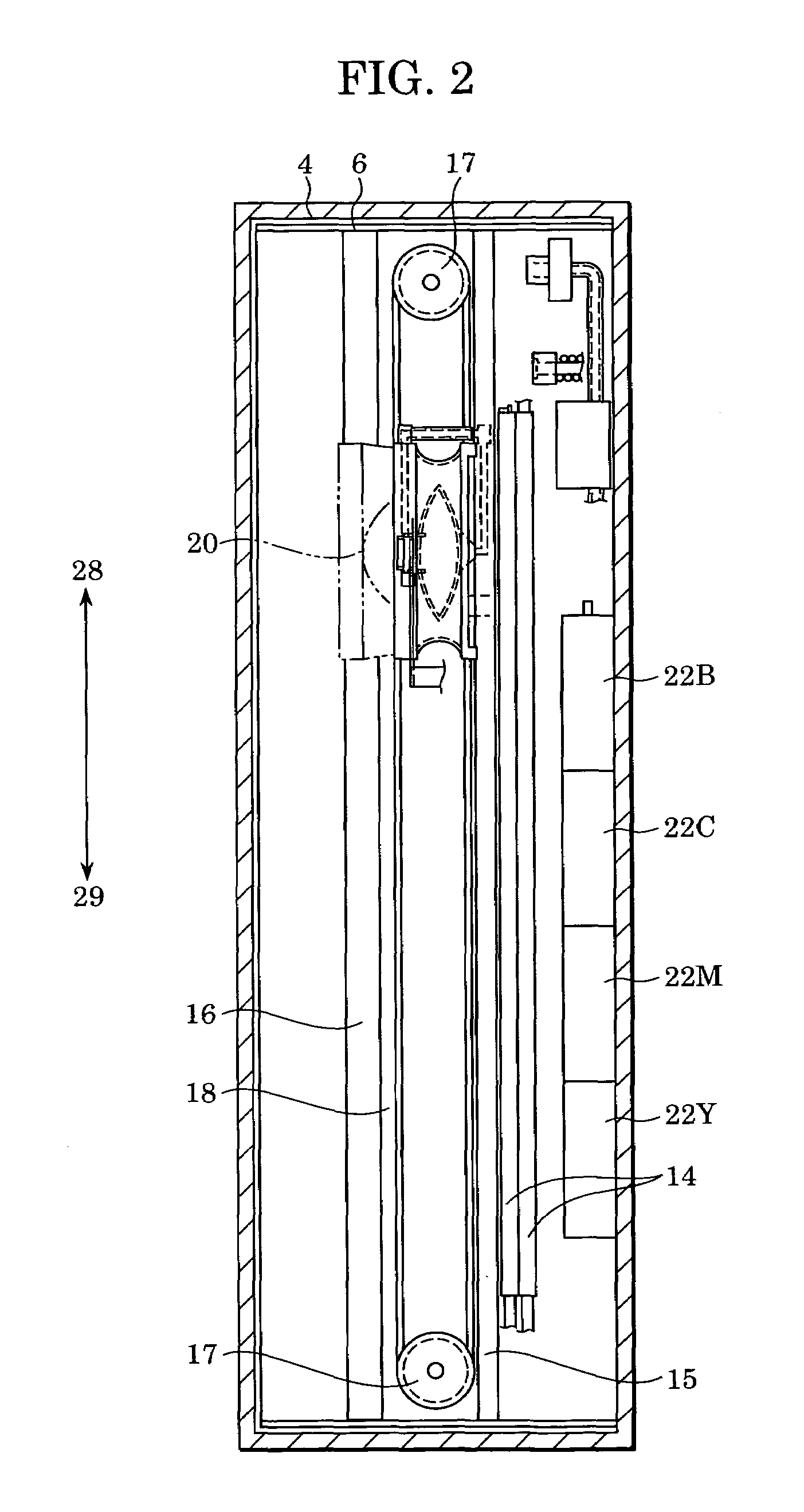Liquid supplying method
a liquid supply and liquid technology, applied in the direction of printing, other printing apparatus, etc., can solve the problems of limited driving force that can be generated by the negative pressure generating mechanism, difficult to reduce the overall size of the printer, and loud noise and larger vibration
- Summary
- Abstract
- Description
- Claims
- Application Information
AI Technical Summary
Benefits of technology
Problems solved by technology
Method used
Image
Examples
first embodiment
[0037]An image formation device according to a first embodiment of the present invention is directed to a printer of a pit-stop ink-supplying type in which an ink-supply path extending between a main tank and a sub tank is connected only when an ink-supply operation is performed.
[0038]FIGS. 1 and 2 are cross-sectional views of an inkjet printer defining an image formation device according to the first embodiment of the present invention. An image formation device according to the first embodiment is a serial-scanning type in which a liquid discharge head is movable in a main scanning direction. Referring to FIG. 1, a printer body mainly includes, for example, a medium-feeding element 1 for feeding printing media S; a printing element 2 that performs a printing operation; and an ink-refilling element 3 that performs an ink-refilling operation.
[0039]Reference numeral 4 indicates a cover disposed on the exterior of the printer body, and reference numeral 5 indicates a tray on which mul...
second embodiment
[0083]In the first embodiment, each leaf spring 38 is formed of a bent shape-memory plate material and is disposed inside the corresponding sub-tank component of the sub tank 20. In the second embodiment, coil springs are used in place of the leaf springs 38, such that these coil springs are disposed on the exterior of the corresponding sub-tank components of the sub tank 20. This is advantageous especially in a case where the ink and the shape-memory material have a problem in view of compatibility.
[0084]FIGS. 10 to 13 are perspective views in which electrical-wire sections are not shown. FIGS. 10 and 12 illustrate a state where one of the sub-tank components of the sub tank 20 is filled with ink, whereas FIGS. 11 and 13 illustrate a state where a certain amount of ink in the sub-tank component is consumed. FIGS. 10 and 11 illustrate an example in which a pair of compression coil springs 80 is disposed between opposite-side protrusions of the top plate 35 and opposite-side protrusi...
third embodiment
[0085]Although the first and second embodiments describe a printer of a pit-stop ink-supplying type, a printer according to a third embodiment of the present invention is directed to a tube-equipped ink-supplying type in which the sub tank 20 and the main tank 22 are constantly connected to each other via a tube.
[0086]Referring to FIG. 15, a carriage 1001 supports an inkjet print head 1002 and a sub tank 1010 disposed thereon. The sub tank 1010 is connected to a main tank 1003 via a tube 1004 such that ink contained in the main tank 1003 can be supplied to the sub tank 1010 via the tube 1004. Reference numeral 1007 indicates printing paper, and reference numeral 1008 indicates a capping member that seals discharge nozzles of the inkjet print head 1002 when the printer is in a power-off state or in a stand-by state so as to prevent the ink in the discharge nozzles from drying out. A section that connects the tube 1004 to the sub tank 1010 is provided with a valve, which is not shown....
PUM
 Login to View More
Login to View More Abstract
Description
Claims
Application Information
 Login to View More
Login to View More - R&D Engineer
- R&D Manager
- IP Professional
- Industry Leading Data Capabilities
- Powerful AI technology
- Patent DNA Extraction
Browse by: Latest US Patents, China's latest patents, Technical Efficacy Thesaurus, Application Domain, Technology Topic, Popular Technical Reports.
© 2024 PatSnap. All rights reserved.Legal|Privacy policy|Modern Slavery Act Transparency Statement|Sitemap|About US| Contact US: help@patsnap.com










